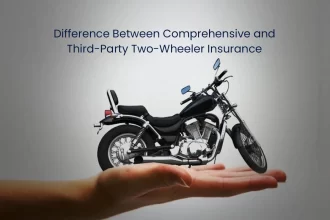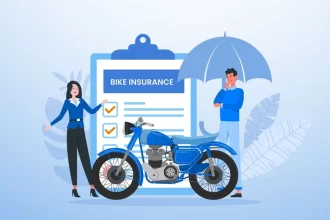When you are involved in an accident, having the right insurance coverage is critical. In many countries, third-party insurance is mandatory for all vehicle owners. It covers any legal liabilities arising due to injuries or damages caused to a third party by your vehicle. However, understanding the third-party insurance claim process can be a daunting task for many.
This blog post will serve as an in-depth guide to navigating the third-party insurance claim process, covering each step with examples to provide clarity. By the end of this article, you will have a solid understanding of how to file a third-party insurance claim, the documents you need, and how the process unfolds. Let’s dive into the essentials of making a third-party insurance claim and ensure you’re fully equipped for any situation. Refer to this blog if you aren’t yet familiar with what is third-party insurance.
What Is Third-Party Insurance?

Third-party insurance is a type of motor insurance policy that provides coverage against the legal liability for any injury or damage caused to a third party by your vehicle. It is the most basic form of insurance and is typically mandatory in most countries, including India, the UK, and Australia. Third-party insurance covers:
- Physical injuries or death of a third party
- Property damage caused to a third party
It is crucial to understand that third-party insurance does not cover damages to your own vehicle or any injuries you may sustain. This is why it is often accompanied by own-damage insurance for better coverage.
Why Is Third-Party Insurance Important?
Third-party insurance is essential for several reasons:
- Legal Requirement: In many countries, it is a legal requirement for vehicle owners to have third-party insurance to drive on public roads.
- Financial Protection: It provides financial protection in case your vehicle causes injury or damage to another person’s property. Without insurance, you would have to pay for these damages out of your pocket.
- Peace of Mind: Accidents are unpredictable, and having third-party insurance ensures that you are not financially liable for harm caused to others, giving you peace of mind.
When Can You Make a Third-Party Insurance Claim?
You can make a third-party insurance claim if:
- Your vehicle caused an accident and resulted in injury or damage to a third party.
- A third-party vehicle caused an accident, and you want to claim compensation for your injuries or property damage.
An example scenario: Imagine you were driving your car and accidentally hit a pedestrian. In this case, the pedestrian is the third party. Your third-party insurance will cover the medical expenses or compensation for any injuries the pedestrian suffers.
By the way, you won’t be able to file a claim if the policyholder has expired insurance. Renew your policy online with these simple steps.
Step-by-Step Guide to Filing a Third-Party Insurance Claim
Step 1: Reporting the Incident to Your Insurance Company
- The first and foremost step in the third-party insurance claim process is to report the incident to your insurance company as soon as possible. Most insurance providers require you to inform them about any accidents within a specific timeframe, usually within 24 to 48 hours.
Example: If you were involved in an accident that injured a pedestrian, you must call your insurance company immediately, informing them of the details, including the location, time, and severity of the accident.
Step 2: Gathering Required Documents
To successfully file a third-party claim, you will need to gather essential documents. These include:
- A copy of the vehicle insurance policy
- Proof of the accident (photos, videos, etc.)
- Registration Certificate (RC) of the vehicle
- A copy of the driver’s license
- An FIR (First Information Report) from the police
These documents serve as evidence for the claim and will be used during the investigation process.
Example: Suppose you hit another car in a minor collision. You need to provide photos of the damage, the third party’s details, and other documents listed above.
Step 3: Registering an FIR with the Police
- An FIR is a crucial document in the third-party insurance claim process. This report confirms that the accident occurred, and it also provides a legal record of the incident. After the accident, go to the nearest police station to file the FIR.
- The police will visit the accident site to gather evidence, take witness statements, and make their report. This step is vital for claims related to bodily injury or death.
Step 4: Filing a Case in Motor Accident Claims Tribunal (MACT)
- Once the FIR is filed, the third party who suffered injuries or property damage must approach the Motor Accident Claims Tribunal (MACT) to file a compensation claim. The MACT handles disputes related to road accidents and ensures that compensation is awarded fairly.
The insurance company may also help the third party in filing the case with the MACT if required.
Example: A motorcyclist suffers injuries after you accidentally hit him with your car. The injured motorcyclist can approach the MACT for compensation.
Step 5: Investigation by the Insurance Company
After the case is filed with the MACT, the insurance company begins its investigation. They will assess the accident details, including:
- The extent of the injuries or property damage
- The cause of the accident
- The third party’s claim for compensation
- The insurance company may send a surveyor to inspect the damage or consult medical records in case of bodily injury.
Example: In a case where a pedestrian is injured, the insurance company may check hospital records, speak to witnesses, and review the FIR before approving the claim.
Step 6: Settlement of the Claim
Once the investigation is complete, the insurance company will either approve or reject the claim. If approved, the third party will receive compensation for the injuries or damage caused. The amount of compensation depends on the severity of the accident and the ruling of the MACT. You can check your motor accident claim tribunal case status on the Motor Accident Claims Tribunal website.
If rejected, the third party may need to provide additional documentation or legal intervention may be required.
Common Challenges in the Third-Party Insurance Claim Process
The third-party insurance claim process can be complicated by various factors, such as:
- Delayed Reporting: If the accident is not reported to the insurance company within the specified time, the claim may be denied.
- Dispute Over Fault: If the parties involved dispute who was at fault, the claim process can become prolonged.
- Insufficient Evidence: Failing to provide proper documentation, such as an FIR or photos of the accident, can hinder the claim.
- Rejection by Insurance Company: Sometimes, insurance companies may reject a claim if they believe the policyholder was at fault or if there was a policy lapse.
Tips to Ensure a Smooth Third-Party Insurance Claim Process
- Report the Incident Promptly: Always inform your insurance provider immediately after an accident to ensure a smooth claim process.
- File an FIR: An FIR is mandatory for third-party claims, especially in cases of bodily injury or death.
- Gather Evidence: Take photos, record witness statements, and collect all necessary documents at the accident scene.
- Cooperate with the Investigation: Be honest with your insurance company and provide all requested information promptly.
- Follow Legal Procedures: Ensure the third party files a case with the MACT to speed up the compensation process.
Conclusion
Filing a third-party insurance claim can be an overwhelming experience, especially in the aftermath of an accident. However, understanding the steps involved in the claim process can simplify the procedure and ensure you receive the compensation you deserve.
By promptly reporting the accident, gathering the necessary documents, filing an FIR, and following the legal process through the Motor Accident Claims Tribunal, you can navigate the third-party insurance claim process effectively. Keep in mind that cooperation with your insurance company and legal authorities is crucial for a successful claim.
Always ensure that your third-party insurance is up-to-date to avoid complications in case of an accident. We hope we’ve helped you understand the third-party insurance claim process. With AUTOLIVENEWS, you can learn about bike EMIs, bike insurance, and more.
Leave a comment if you liked this blog. We appreciate your feedback!
Frequently Asked Questions (FAQs)
What is a third-party insurance claim?
A third-party insurance claim is a claim made by someone who is not the policyholder but has suffered injuries or damages due to the policyholder’s vehicle.
What does third-party insurance cover?
Third-party insurance covers damages or injuries caused to a third party. It does not cover the policyholder’s own damages or injuries.
Is an FIR necessary for third-party insurance claims?
Yes, an FIR is required for third-party insurance claims, especially in cases of bodily injury or death.
Can I claim third-party insurance for a hit-and-run case?
Yes, the injured party can file a case with the MACT and claim compensation from the “Hit-and-Run” compensation fund.
How long does it take to settle a third-party insurance claim?
The settlement time varies depending on the complexity of the case, but it can take anywhere from a few weeks to several months.
Can my insurance company reject a third-party claim?
Yes, the insurance company can reject a claim if there is insufficient evidence or if the accident was not reported on time.
What happens if the third-party claim exceeds my policy limit?
If the compensation amount exceeds the limit of your policy, you may be personally liable for the additional amount.
Can a third party directly approach the insurance company for a claim?
No, the third party must first file a case with the MACT, and the tribunal will direct the insurance company to pay the compensation.
Is there a time limit for filing a third-party claim?
Yes, you must file a third-party claim within a specified period after the accident, usually within a year.
Does third-party insurance cover my own vehicle’s damages?
No, third-party insurance only covers damages to a third party. You need own-damage or comprehensive insurance for your own vehicle’s damages.















